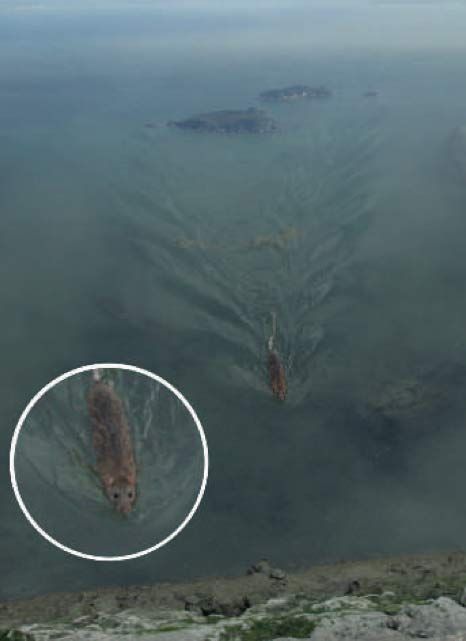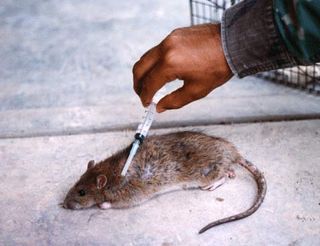World's Most Elusive Rat Dead After 18-Week Chase

It seemed like a good idea. Let a lone rat loose on a rodent-free island and then figure out how to kill it. That way, when other islands are invaded by rats, you'll know what to do.
Scientists figured they'd trap this foot-long varmint in no time.
Eighteen weeks later, they finally trapped it with some fresh penguin bait. On another island.
A real rat race
Rodents are a problem just about everywhere. In New Zealand, at least 11 islands have been invaded by Norway rats since 1980, in each case after rats from earlier invasions had been eradicated. The invaders disrupt local ecosystems.
In the new study, announced today, a Norway rat was originally lured into a trap with chocolate. Its DNA was recorded, and the rat was outfitted with a radio collar and set free on the tiny island of Motuhoropapa off the coast of New Zealand.
With no rats to compete with, the test subject traversed the entire island for about four weeks before settling on a home range, data from the radio collar showed.
Sign up for the Live Science daily newsletter now
Get the world’s most fascinating discoveries delivered straight to your inbox.
For the next four weeks, conventional rat-trapping techniques were employed -- snap traps, live traps and waxed devices -- without success.
After 10 weeks, the radio signal was lost.
Island hopping
Then the researchers found rat feces on the island of Otata, 1,300 feet (400 meters) away across the open ocean. The DNA was a match, confirming a suspicion scientists had, that rats were good swimmers.
The elusive creature had made the longest confirmed open-water crossing of any rodent in history.
Different methods were used on Otata: buried traps, peanut butter, poison and even trained dogs. Not until more than four months after its release was the rat finally killed, in a trap baited with fresh penguin.
The scientists, led by James Russell at the University of Auckland, sagely conclude that conventional methods didn't work well. They also have an idea why: Being alone, the rat didn't behave as it would have in a rat-infested city; and with no competition for food, the bait was less attractive than it otherwise would have been.
The results are detailed in the Oct. 20 issue of the journal Nature.
"Our results may help in the design of conservation strategies to keep islands free of invasive rodents," the researchers write.
- World's Ugliest Animals
- Sperm Cells Swim in Circles
- Eek! Robo-Rats Make Their Own Rules
- No Joke: Animals Laugh, Too
Survivors

Norway rats (Rattus norvegicus) are also called sewer rats. They can be 18 inches long including a 6-inch tail.
They can pass through an opening of just 1/2-inch, scale a brick wall, and survive being flushed down a toilet.
Norway rats will eat just about anything, but they prefer high-quality foods such as meat and fresh grain. The best bait to trap them in your home: peanut butter, chocolate candy, dried fruit, hot dog or bacon.
Norway rats came originally from Asia and spread globally by hitching rides on ships. They have little if any Norwegian history.
SOURCE: Illinois Dept. of Public Health; National Geographic
Robert is an independent health and science journalist and writer based in Phoenix, Arizona. He is a former editor-in-chief of Live Science with over 20 years of experience as a reporter and editor. He has worked on websites such as Space.com and Tom's Guide, and is a contributor on Medium, covering how we age and how to optimize the mind and body through time. He has a journalism degree from Humboldt State University in California.












